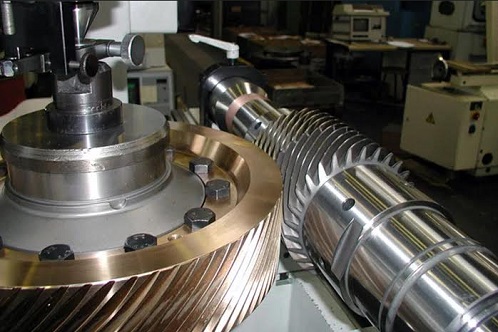The production of precision gears in various industries, including the automotive and machinery sectors, necessitates using gear-cutting tooling. These specialized tools create Gear tooth profiles precisely, ensuring optimal connection and performance. The processes for gear cutting tooling have become more effective as technology has advanced, increasing production rates and decreasing costs. The capacity to accomplish unrivaled surface tasks and maintain high accuracy makes gear-cutting tooling imperative for fulfilling the needs of current engineering applications.
Accuracy and Precision
The essential advantage of using material cutting tooling is precision, which is usually achieved. Today’s gear-cutting tools, hobs, shapers, and structure cutters side by side are designed to create highly precise gear profiles. This precision is the key to correctly positioning gears, reducing curvature, and increasing machinery usage efficiency. Moreover, performance loss by minimizing the errors on gear teeth reduces wear and tear, thereby increasing longer life for the gears and the equipment they operate.
Improved Surface Finish
High Surface Finish Gear cutting tooling also enhances the high surface of the gear teeth. Highly efficient tools can reduce the mean reaction of gear wheels, which is crucial for smooth operation and low noise levels in machines. Better surface completion also helps to increase the strength of weakness in gear wheels, allowing them to withstand higher loads without failure. The gear shaper cutters in automotive transmission systems, industrial equipment, and robotics have higher reliability and efficiency because of the study, which enhances surface quality.
Innovative Progressions
The field of gear cutting tooling has seen critical mechanical progressions recently. Gear manufacturing has been transformed by innovations like CNC (Computer Numerical Control) machining, cutting-edge materials for tooling, and coatings that reduce resistance and wear. These technologies further enhance gear-cutting tooling’s advantages, enabling increased flexibility, production rates, and accuracy.
Enhanced Production Efficiency
Fundamentally applying progressed gear-cutting apparatuses goes excessively far in increasing creation proficiency. These tools acknowledge enhanced cutting speeds and supply rates, permitting optimized procedure times. Modern tooling also has a chip removal design that effectively improves machining. Large quantity production and short lead time enable gear manufacturers to deliver the product to meet the fast and rapid industry demands credits to this efficiency.
Cost-Adequacy
The extended increasing gear to save money using the new gear-cutting tooling may be considered the further development of ultimate interest. Improved tooling decreases material consumption, time to machine, and the number of required processes to operate for the last time. Such efficiency leads to the overall reduction of the costs of production. The improvements in tooling technology, solidity, and lifespan of the tooling reduce the frequency of substitution along with a decrease in maintenance costs, making it a feasible solution for gear manufacturers.
Bottom Line
Gear-cutting tools are Precision, improved surface finishes, increased production efficiency, and among the several benefits of gear-cutting tooling that are central to the creation of gears. Due to technological developments, many of these tools have become cheaper and more flexible, enabling manufacturers to meet customers’ needs while maintaining quality fully. Efficient gear-cut tools will grow in response to industry improvement regarding gear-driven applications since reliability will be in the future.


